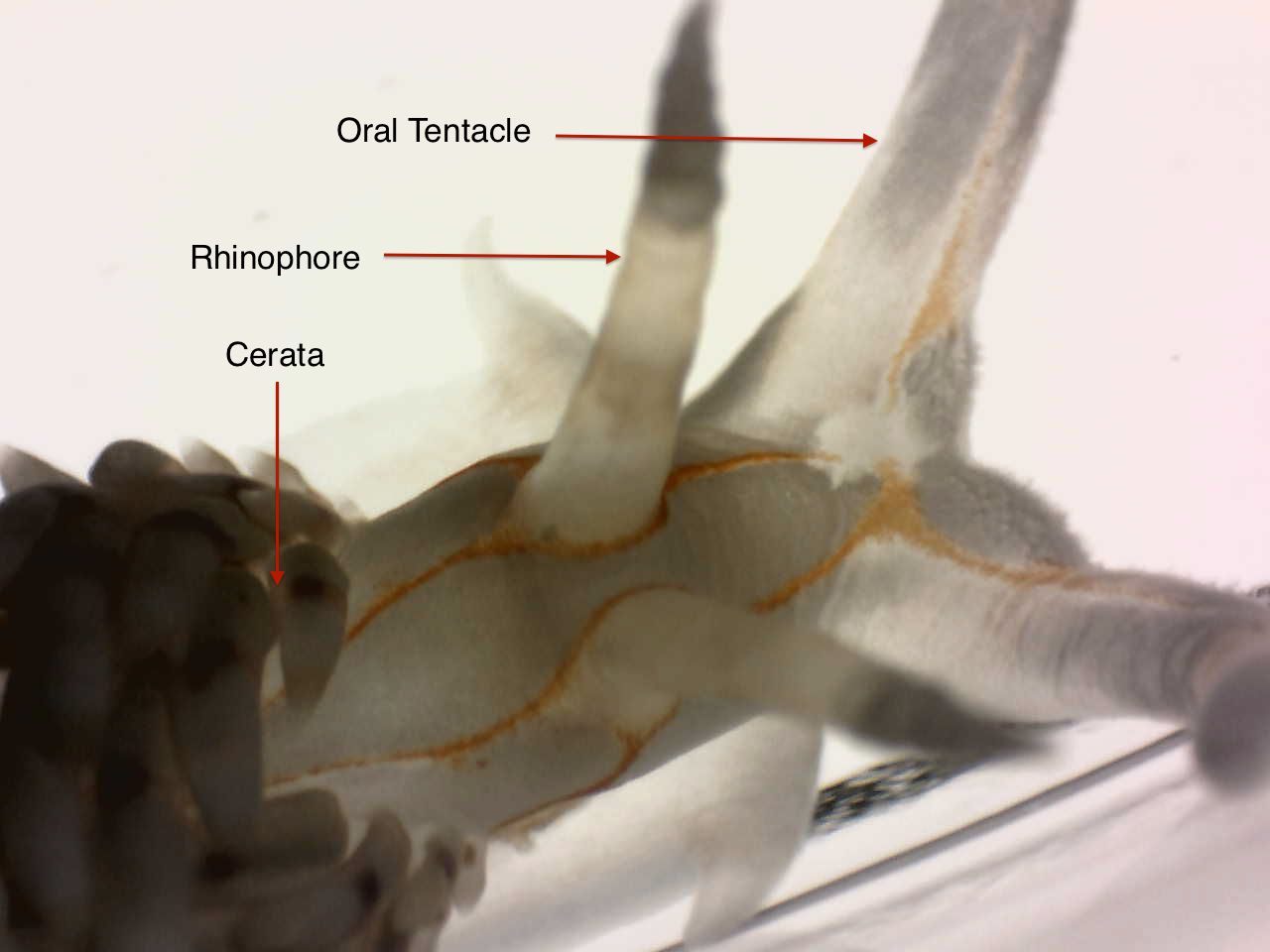Physical Description
Size
Specimens observed in a lab and aquarium setting ranged from 10-16 mm in adults. A single juvenile was observed to be 6 mm long. Mature Godiva members reportedly reach up to 37 mm in length (Rudman, 2002).
Coloration
The heads of these animals are an opaque white with a pairs of bright orange lines running on either side of the head down dorsal and lateral sides of the body. These are the defining characteristic of the species (Behrens, 2005). The oral tentacles are milky white except for symmetrical translucent pinkish-purple patches along the dorsal side. Bright orange lines extend from the head up each oral tentacle. The rest of the body is pale, milky white, with the orange lines intersecting between ceratal tufts. The rhinophores range from clear to translucent orange, tapering to yellow at the distal ends. The foot is translucent white with orange patches on the leading edges. The cerata are milky white with a greenish tinge to the proximal portion. A single thin sub-apical purple bands wraps around each cerata just below the yellowish tip.
 |
| Figure 1. Godiva specimen exploring the bounds its petri-dish enclosure |
Slight variations occur in the coloration of specimens, some presenting more purpling of the oral tentacles while others are almost orange. Additionally some show what appear to be wrinkles along the rhinophores. However, all individuals exhibit the orange markings that identify them as a member of the Godiva branch of Opishthobranchs (Behrens, 2005).
External Morphology
The body is elongated with the posterior end tapering to a tail. The rhinophores are long and smooth, tapering to rounded ends. The oral tentacles are elongated, slightly longer than the rhinophores, and slender. The muscular foot is little wider than the body and the corners at the anterior end taper to form the tentacles (Burn, 2006). The cerata are arranged in clusters of 5-7 down either side of the body, each cluster consists of multiple rows of tubular cerata protruding from the dorso-lateral surface. When disturbed the cerata are extended, reaching up to 12 mm in length (Marshall, 1999).

|
| Figure 2. Diagram displaying the cephalic features of Godiva specimen |
The anus is located toward the posterior end of the body onthe right side of the dorso-lateral surface between the 3rd and 4thceratal tuft. The reproductive opening is on the same side of the body but more anteriorly located, between the rhinophores and the first ceratal tuft (Todd, 2000).
Defining characteristics
- Ventral Cerata
- Muscular Foot
- Translucent rhinophores
- Protrusible Oral Tentacles
- Twin orange intersecting body lines
|